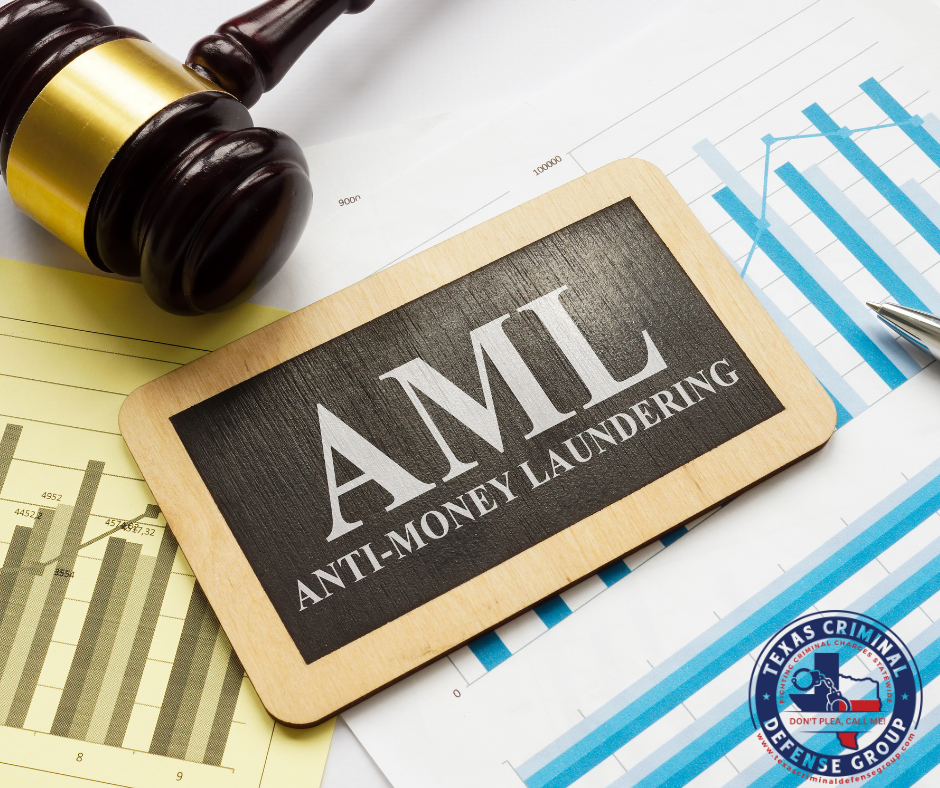
Money Laundering as a Crime
Money laundering is a type of white-collar crime in which you place, layer, and integrate the money that you know came from unlawful activities such as gambling, smurfing, or drug trafficking. People often get caught for money laundering when they try to make illegally obtained money seem legal. The idea is to make the money seem like it’s from legal activities, even though it’s not.
It is usually an extra charge that goes along with other big crimes. This occurs due to the presence of illicit activities, and individuals need to launder the proceeds from those activities.But sometimes, even if there isn’t much proof of other crimes, federal prosecutors can still go after money laundering by itself. This has been happening more often in recent years when they don’t have much evidence of other suspected illegal activities.
What is Money Laundering?
Money laundering is a felony that is punishable by both the federal government and the state of Texas. Section 34.01 of the Texas Penal Code establishes detailed guidelines for what constitutes money laundering in Texas. In the United States, you could be charged with money laundering if you:
- Have, conceal, move, or transport money derived from illegal activity in any way.
- Do, supervise, or facilitate the transfer of funds from illicit operations.
- Put money into, take money out of, or plan to use money derived from criminal activity.
- Put money into or plan to utilize the money for things that you feel are going to help unlawful operations.
You don’t have to know all the details about the crimes involved to be found guilty of money laundering. It’s important to understand that the funds are derived from illicit activities.
Money laundering is a serious financial crime practiced by both high-level and low-level offenders. Many financial institutions now have policies in place to prevent and detect money laundering. These are known as “anti-money-laundering (AML) policies.”
3 Stages of Money Laundering
Money laundering consists of three steps: placement, layering, and integration.
- Placement: Criminals put illegal money into the regular financial system, hiding its origin.
- Layering: In layering, they move the money around through various transactions and may buy valuable items to complicate tracing.
- Integration: Finally, they make the money seem legal by investing in real businesses, faking invoices, or even creating fake charities, fooling the law.
Variants of Money Laundering
Money laundering strategies are always evolving as thieves seek new ways to conceal their illicit funds. Here are some of the most popular methods:
Casinos
Criminals visit casinos, swap their illegal cash for casino chips, and then turn these chips into different forms of money, often casino checks. They don’t constantly engage in gambling; they might simply exchange chips for cheques to give their illicit money an appearance of legitimacy.
Cryptocurrencies
Digital currencies like Bitcoin have made money laundering easier. People trade these currencies directly, moving large sums of money across borders. Some cryptocurrencies lack strict user checks, making them attractive to money launderers.
Electronic Money
Electronic money, a digital form of currency, becomes accessible through means such as malware, online scams, or hacking. Criminals often use prepaid cards to make their illegal money appear clean, buying things to hide its source.
Money Mules
Money mules help move illegal money across borders by physically carrying cash and depositing it in countries with lax rules. They can face legal consequences, similar to money launderers.
Offshore Accounts
Individuals conceal inexplicable funds in banks located in nations with confidential tax regulations, believing they will evade detection.
Smurfing
Smurfing, also called structuring, is when criminals break a large sum of money into smaller parts, doing many transactions and spreading the money across various accounts. This complicates the process of identifying the source of the funds.
Penalties of Money Laundering under Texas Law
The consequences vary depending on the amount of money involved in the crime:
- If it’s between $1,500 and $20,000, it’s a state jail felony, and you can get fined up to $10,000 and be in jail for up to two years in prison.
- If it’s between $20,000 and $100,000, it’s a third-degree felony, and you can get fined up to $10,000 and be in prison for up to 10 years in prison.
- If it’s between $100,000 and $200,000, it’s a second-degree felony, and you can get fined up to $10,000 and be in prison for up to 20 years in prison.
- In case the amount exceeds $200,000, it constitutes a first-degree felony, potentially leading to a $10,000 fine and a possible life sentence in prison.
Arrested? Don’t Plea, Call Me!
Money laundering is a serious offense that is classified as a white-collar felony under both state and federal law. If convicted on felony charges, individuals often confront the prospect of spending years in jail and paying substantial fines, amounting to hundreds of dollars.
A money laundering conviction can significantly impact more than just fines and prison sentences—it can permanently damage your personal reputation. In conclusion: It’s not practical for you to remain idle and inactive. With so much at stake, it is critical that you entrust your future to a reputable criminal defense team.
A skilled criminal defense attorney will research the charges against you and design a strong defense plan for your specific situation. They will also work out with the prosecution on your behalf and fight in court to safeguard your rights and interests. Having an experienced attorney on your side might increase your chances of a good outcome in your case.
